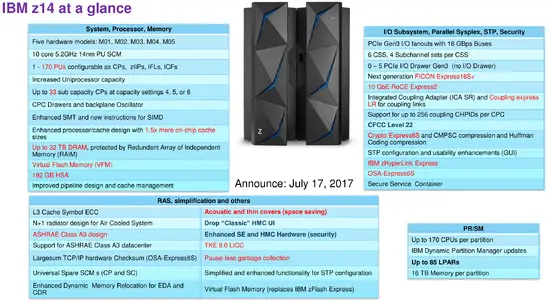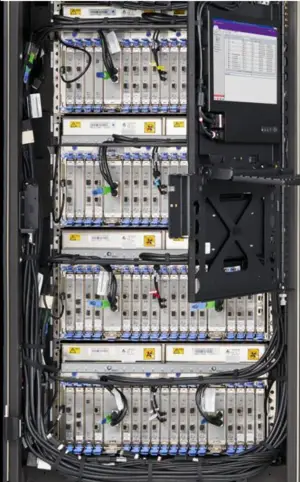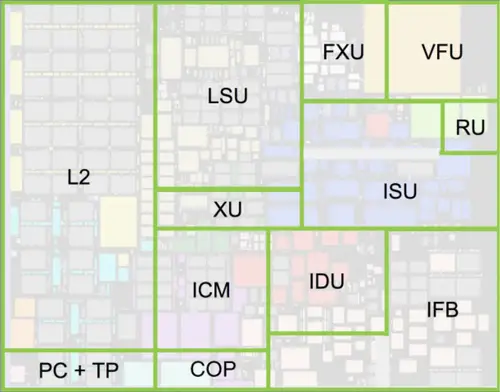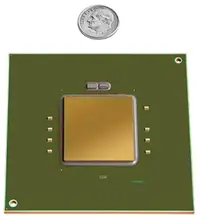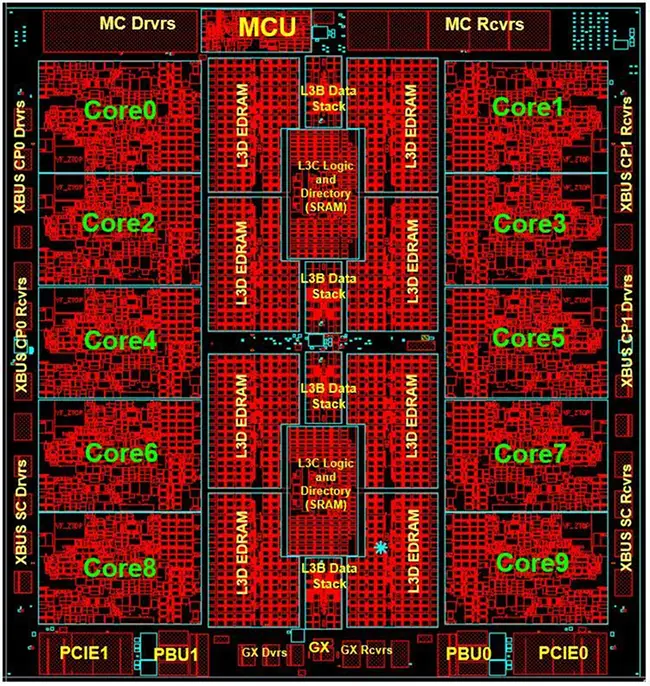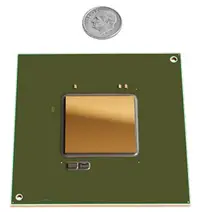(→Overview) |
(→Mainframe) |
||
| Line 79: | Line 79: | ||
The IBM z14 [[mainframe]] comes in a number of slightly different flavors. In order to reach the highest clock speed of 5.2 GHz, the water cooled system is required, otherwise the air cooled is sufficient. | The IBM z14 [[mainframe]] comes in a number of slightly different flavors. In order to reach the highest clock speed of 5.2 GHz, the water cooled system is required, otherwise the air cooled is sufficient. | ||
| − | + | ||
| − | + | <div> | |
| − | + | <div style="float: left;">'''Water Cooled'''<br>[[File:ibm z14 mainframe (water cooled).png|450px]]</div> | |
| − | + | <div style="float: left; margin-left: 20px;">'''Air Cooled'''<br>[[File:ibm z14 mainframe (air cooled).png|450px]]</div> | |
| − | [[File:ibm z14 mainframe (water cooled).png|450px]] | + | </div> |
| − | + | {{clear}} | |
| − | [[File:ibm z14 mainframe (air cooled).png|450px]] | + | |
| − | |||
Every mainframe have two frames that are bolted together. Frames are built to Electronic Industries Alliance (EIA) standards and are 42U EIA frames. Viewed from the front, the right side is called '''Frame A''' while the left side is called '''Frame Z'''. | Every mainframe have two frames that are bolted together. Frames are built to Electronic Industries Alliance (EIA) standards and are 42U EIA frames. Viewed from the front, the right side is called '''Frame A''' while the left side is called '''Frame Z'''. | ||
Revision as of 22:29, 12 March 2018
| Edit Values | |
| z14 µarch | |
| General Info | |
| Arch Type | CPU |
| Designer | IBM |
| Manufacturer | GlobalFoundries |
| Introduction | July 17, 2017 |
| Process | 14 nm |
| Core Configs | 7, 8, 9, 10 |
| Pipeline | |
| Type | Superscalar, Pipelined |
| OoOE | Yes |
| Speculative | Yes |
| Reg Renaming | Yes |
| Instructions | |
| ISA | z/Architecture |
| Cache | |
| L1I Cache | 128 KiB |
| L1D Cache | 128 KiB |
| Succession | |
z14 was a z/Architecture-based microarchitecture designed by IBM and introduced in 2017 for their z14 processors and mainframes. The z14 microarchitecture replaced the z13.
Contents
Process Technology
z14-based microprocessors are manufactured on GlobalFoundries's 14 nm (14HP) FinFET Silicon-On-Insulator (SOI) process. The process was designed by IBM at what used to be their East Fishkill, New York fab which has since been sold to GlobalFoundries.
Release Dates
IBM z14 was announced on July 17, 2017. General availability started on September 13, 2017.
Architecture
Key changes from z13
- 14 nm process (from 22 nm)
- 6.1B transistors (from 3.99B; 53% increase)
- Higher clock frequency (5.2 GHz from 5 GHz; 4% increase)
- Higher scalability
- Up to 170-way multiprocessing (from 141-way)
- Core
- Improved Operand Store Compare (OSC) prediction
- Faster branch wakeup
- Improved instruction delivery
- Reduced execution latency
- Cache
- New directory design
- Power efficient
- L1I$ increased to 128 KiB/core (from 96 KiB/core; 33% increase)
- L2D$ increased to 4 MiB/core (from 2 MiB/core; 100% increase)
- L3$ increased to 128 MiB/CP (from 64 MiB/CP; 100% increase)
- New 672 MiB/drawer of shared L4
- New directory design
- TLB
- BTB
- 1.33x larger BTB1
- 1.33x larger BTB2
- New Hashed Perceptron Predictor
- New Simple Call Return Stack
- Central Processor Assist for Cryptographic Function (CPACF)
- Dedicated co-processor for each core
- Claims 6x faster encryption functions (vs. z13)
- 4x Advanced Encryption Standard (AES) speedup
- Support for True Random Number Generator
- New support for SHA-3 standard
This list is incomplete; you can help by expanding it.
New instructions
Overview
Mainframe
The IBM z14 mainframe comes in a number of slightly different flavors. In order to reach the highest clock speed of 5.2 GHz, the water cooled system is required, otherwise the air cooled is sufficient.
Every mainframe have two frames that are bolted together. Frames are built to Electronic Industries Alliance (EIA) standards and are 42U EIA frames. Viewed from the front, the right side is called Frame A while the left side is called Frame Z.
A Frame
At the top of the frame is an optional overhead power cabling solution. There are top exit options for fiber optic cables and other ethernet solutions such as FICON, OSA, 12x InfiniBand, 1x InfiniBand, ICA, zHyperLink Express, Coupling Express LR, and RoCE.
There are two to four optional integrated battery features (IBFs) which serves as a local uninterrupted power source. Additionally, the IBFs provide additional power robustness functionalities such as increases power line disturbance immunity and noise reduction. The number of installed IBFs depends on the number of power regulators that are installed and is always installed in pairs.
Additionally, at the top are a large set of Bulk power regulators (BPRs). The number of BPRs in the frame will depend on the exact configuration of the unit.
The entire bottom part of the rack consists of up to four PCIe I/O drawers, installed top-down.
Z Frame
| This section is empty; you can help add the missing info by editing this page. |
Die
Core
Below is a layout of a single physical core:
- L2 - L2I$ + L2D$
- PC + TP - Core pervasive unit (instrumentation/error collection) + Trap
- LSU - Load-store unit (+ L1D$)
- XU - Translation unit (TLB + DAT)
- ICM - Instruction cache & merge
- COP - Dedicated Co-Processor
- FXU - Fixed-point unit
- VFU - Vector and Floating point Unit
- ISU - Instruction sequence unit
- RU - Recovery unit
- IDU - Instruction decode unit
- IFB - Instruction fetch and branch prediction
Single-chip module (SCM)
IBM's z14 Single-Chip Module (SCM) consists of a multi-layer metal substrate module that includes either:
- 1x Processor Unit (PU)
- 1x System Controller (SC)
Central Processor (CP) Chip
- IBM's developed (now GlobalFoundries) 14HP Process
- CMOS FinFET SOI
- 17 Metal Layers
- deca-core (10 Processor Units (PUs))
- 5.2 GHz (192 ps cycle time)
- 6,100,000,000 transistors
- 14.4 miles of copper wire
- 26.5 x 27.8 mm die
- 736.7 mm² die size
- 18,581 power pins
- 1,505 signal pins
System Controller (SC) Chip
- IBM's developed (now GlobalFoundries) 14HP Process
- CMOS FinFET SOI
- 17 Metal Layers
- 25.3 x 27.5 mm die
- 695.75 mm² die size
- 7,100,000,000 transistors
- + 2,100,000,000 cells of eDRAM (~2.1B xTors + 2.1B capacitors)
- 672 MiB shared eDRAM L4 Cache
| codename | z14 + |
| core count | 7 +, 8 +, 9 + and 10 + |
| designer | IBM + |
| first launched | July 17, 2017 + |
| full page name | ibm/microarchitectures/z14 + |
| instance of | microarchitecture + |
| instruction set architecture | z/Architecture + |
| manufacturer | GlobalFoundries + |
| microarchitecture type | CPU + |
| name | z14 + |
| process | 14 nm (0.014 μm, 1.4e-5 mm) + |
